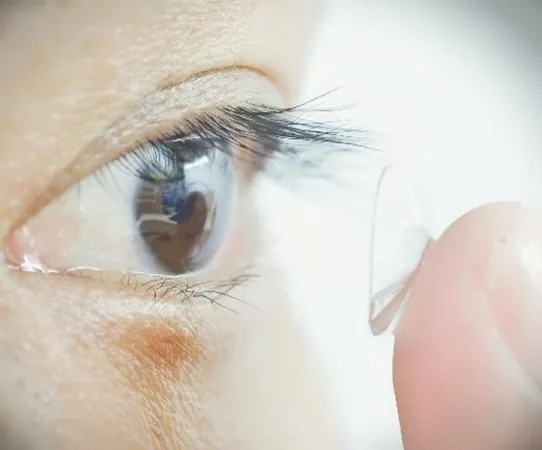
Revolutionary Contact Lenses Allow Users to See in Near-Infrared Light!
2025-05-30
Author: Wei
In a groundbreaking development for vision technology, new contact lenses enable wearers to detect near-infrared light without the need for bulky night vision goggles or complicated equipment. These innovative lenses utilize specially designed metallic nanoparticles that transform invisible infrared wavelengths into visible light, promising to revolutionize how rescue workers and people in low-visibility situations perceive their surroundings.
The Science Behind the Magic
Unlike typical human vision, which only captures a small range of wavelengths (400-700 nm), these lenses open a new window to an entirely different segment of the electromagnetic spectrum—wavelengths between 700 nm and 1 mm. Humans naturally lack the ability to see these infrared wavelengths due to the limitations of light-sensitive proteins in our eyes.
The Breakthrough that Overcomes Limitations
Current technologies like night vision goggles are useful but require power sources and typically cannot differentiate between various infrared wavelengths. In a previous experiment, researchers injected photoreceptor-binding nanoparticles into laboratory mice, but that technique posed risks for human use. Instead, the new study led by neuroscientist Tian Xue has embedded these nanoparticles into biocompatible materials similar to those in standard soft contact lenses.
How It Works
These lenses feature nanoparticles made from a composite of gold and rare earth elements, which capture low-energy photons and emit them as higher-energy, visible light. In tests with mice, those wearing the new contact lenses demonstrated the ability to perceive infrared wavelengths by favoring spaces illuminated by IR light. Furthermore, brain imaging showed active engagement of visual processing centers when exposed to infrared.
Fascinating Findings in Human Trials
Moving to human trials, volunteers wearing near-infrared contact lenses could accurately recognize Morse code-like flashing signals and identify the direction of incoming infrared light. Interestingly, participants reported clearer images when their eyes were closed, likely due to the enhanced ability of infrared light to penetrate through eyelids. Notably, normal vision remained unaffected by wearing the lenses.
Expanding Vision Beyond Nighttime
But the innovation doesn’t stop with mere infrared detection! Researchers created a wearable system using flat UCLs (upconverting contact lenses) that allowed users to distinguish various patterns, revealing immense potential for practical applications. They even replaced certain nanoparticles to convert infrared light into three visible colors: green, blue, and red, which could significantly benefit color-blind individuals.
A Bright Future Ahead
According to the research published in Cell, these lenses could improve nighttime vision and serve as an aid for color blindness while also enhancing visibility in foggy or dusty conditions. While currently effective only with bright infrared emissions, the team aspires to enhance the nanoparticles' photosensitivity so they can effectively utilize lower-light conditions.
This breakthrough in vision technology not only paves the way for innovative applications in various fields but also propels us toward a future where seeing beyond the visible spectrum becomes a reality!




 Brasil (PT)
Brasil (PT)
 Canada (EN)
Canada (EN)
 Chile (ES)
Chile (ES)
 Česko (CS)
Česko (CS)
 대한민국 (KO)
대한민국 (KO)
 España (ES)
España (ES)
 France (FR)
France (FR)
 Hong Kong (EN)
Hong Kong (EN)
 Italia (IT)
Italia (IT)
 日本 (JA)
日本 (JA)
 Magyarország (HU)
Magyarország (HU)
 Norge (NO)
Norge (NO)
 Polska (PL)
Polska (PL)
 Schweiz (DE)
Schweiz (DE)
 Singapore (EN)
Singapore (EN)
 Sverige (SV)
Sverige (SV)
 Suomi (FI)
Suomi (FI)
 Türkiye (TR)
Türkiye (TR)
 الإمارات العربية المتحدة (AR)
الإمارات العربية المتحدة (AR)